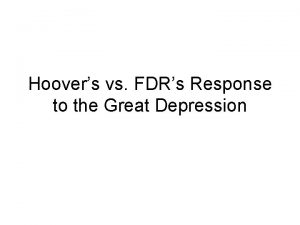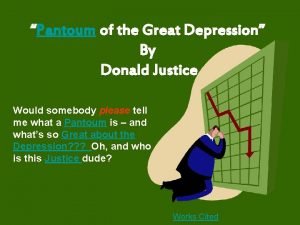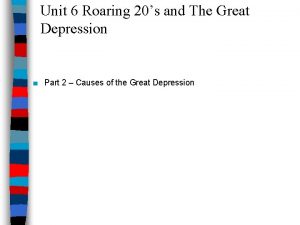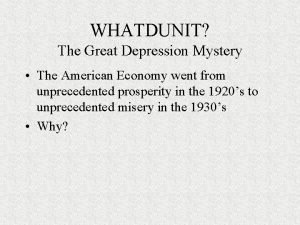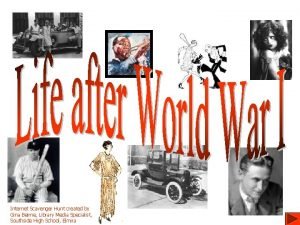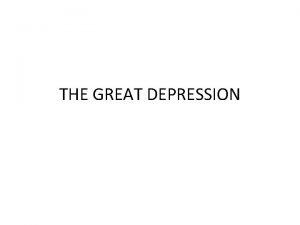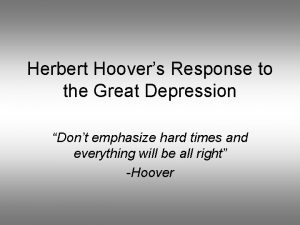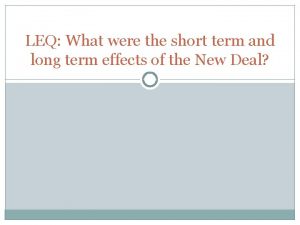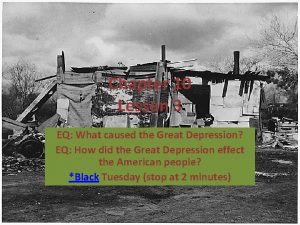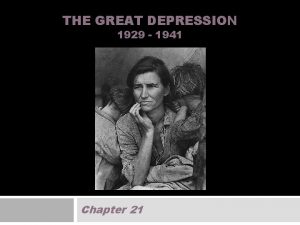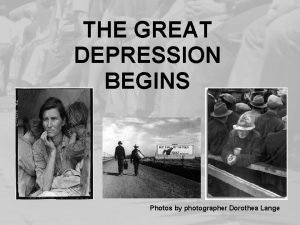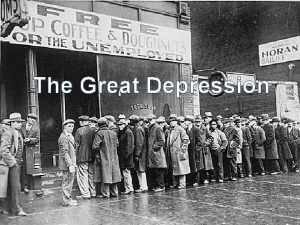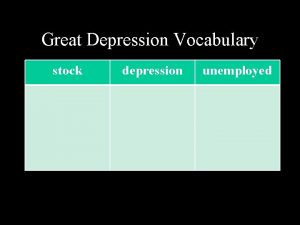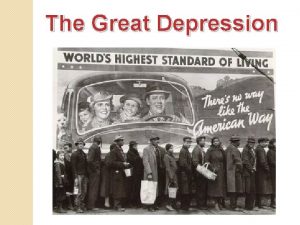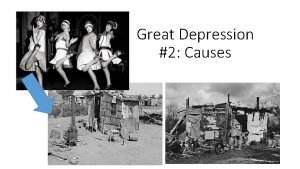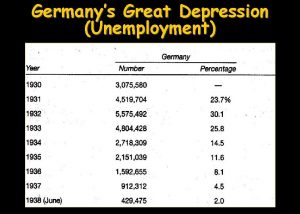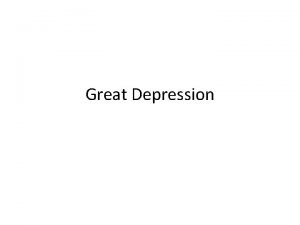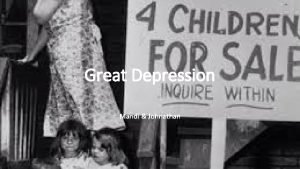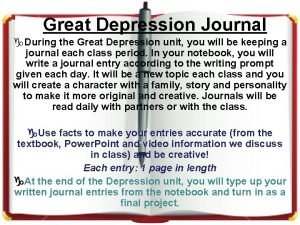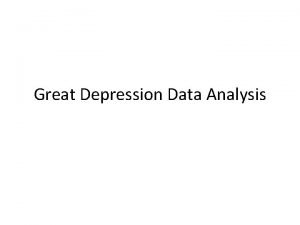THE GREAT DEPRESSION Impact of the Great Depression
















- Slides: 16

THE GREAT DEPRESSION

Impact of the Great Depression � Cities: �Increase in homelessness, increase in unemployment � 25% unemployment across the country ■ 50% or higher for minorities �Increase in racial violence, increase in deportations

Soup Kitchens and Bread lines

Shantytowns – “Hoovervilles”


Riding the Rails Men leave their families in search of work � 300, 000 transient “hoboes” ride the rails �


Hoover is Blamed for Americans Misery � � � President Herbert Hoover is blamed for not helping or caring about Americans suffering during the depression Newspapers used for blankets referred to as “Hoover blankets” Empty pant pockets turned out called “Hoover Flags”

Hoover’s Domestic Policy Hoover believe in limited government intervention � Supported giving money to banks and businesses so that they could create jobs (trickle-down economics) � Did not support welfare or direct relief to the poor and needy – Hoover thought this would “weaken people’s independence and make them too reliant on government hand-outs � Believed volunteer charity groups and local organizations should help the poor, not the �

Impact on the American People Without financial assistance, people suffered from poor diets and lacked proper health care � School closures increased due to decrease funding – no tax base to raise money for schools � Children worked in sweatshops to help family income � Between 1928 to 1932, the suicide rate rose more than 30% � Increase in mental hospital patients �

Depression in Rural Areas 1929 -1932: 400, 000 farms were lost to foreclosure � Farmers unable to pay their loans due to decreasing farm prices � Farmers burned crops and fields; dumped milk to create food shortages �

1930 s Drought in Great Plains Dust Storms occurred from 1930 – 1936 � Wind carried dust over hundreds of miles, covering homes, cattle, equipment � The Dust Bowl – Kansas, Oklahoma, Texas, New Mexico, and Colorado � Top soil pulled up and carried all the way to the Atlantic ocean � Causes: � � Prairie grass was pulled out in the Great Plains � drought



Dust Bowl Clip

Farmers and Sharecroppers go West Those effected by the dust storms migrate west, looking for work � Called “Okies” – negative term for migrant workers � Migrant workers picked fruit and vegetables; poor pay �
 How did the great depression impact the world
How did the great depression impact the world What is the main idea of the cartoon?
What is the main idea of the cartoon? Pros and cons of the great depression
Pros and cons of the great depression Fdrs response to the great depression
Fdrs response to the great depression Stock market great depression political cartoon
Stock market great depression political cartoon Donald justice pantoum of the great depression
Donald justice pantoum of the great depression Great depression
Great depression During the great depression there were many wanderers
During the great depression there were many wanderers Overspeculation great depression
Overspeculation great depression Roaring twenties scavenger hunt answers
Roaring twenties scavenger hunt answers High tariffs great depression
High tariffs great depression President herbert hoover's response to the great depression
President herbert hoover's response to the great depression Great depression webquest
Great depression webquest The great depression leq
The great depression leq Great depression acrostic
Great depression acrostic Http://www.history.com/topics/great-depression
Http://www.history.com/topics/great-depression Five effects of the great depression
Five effects of the great depression



